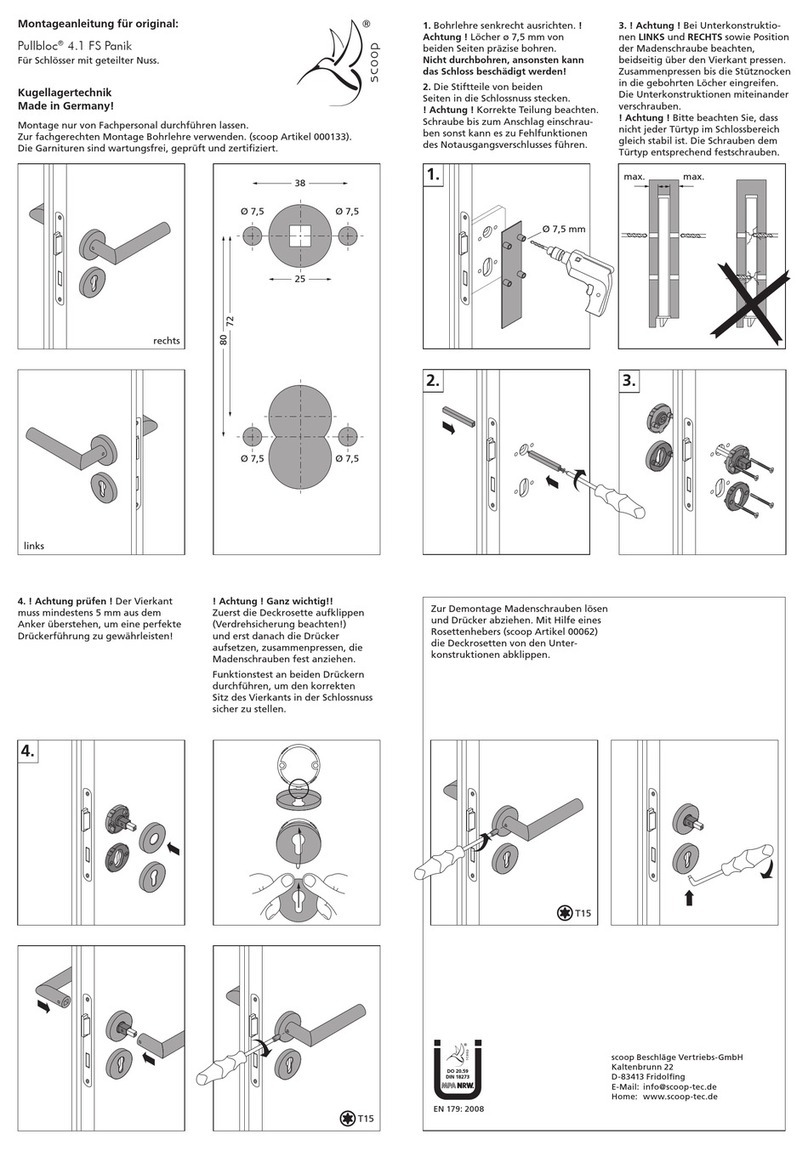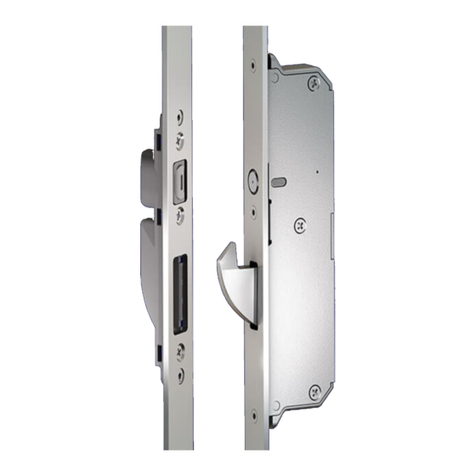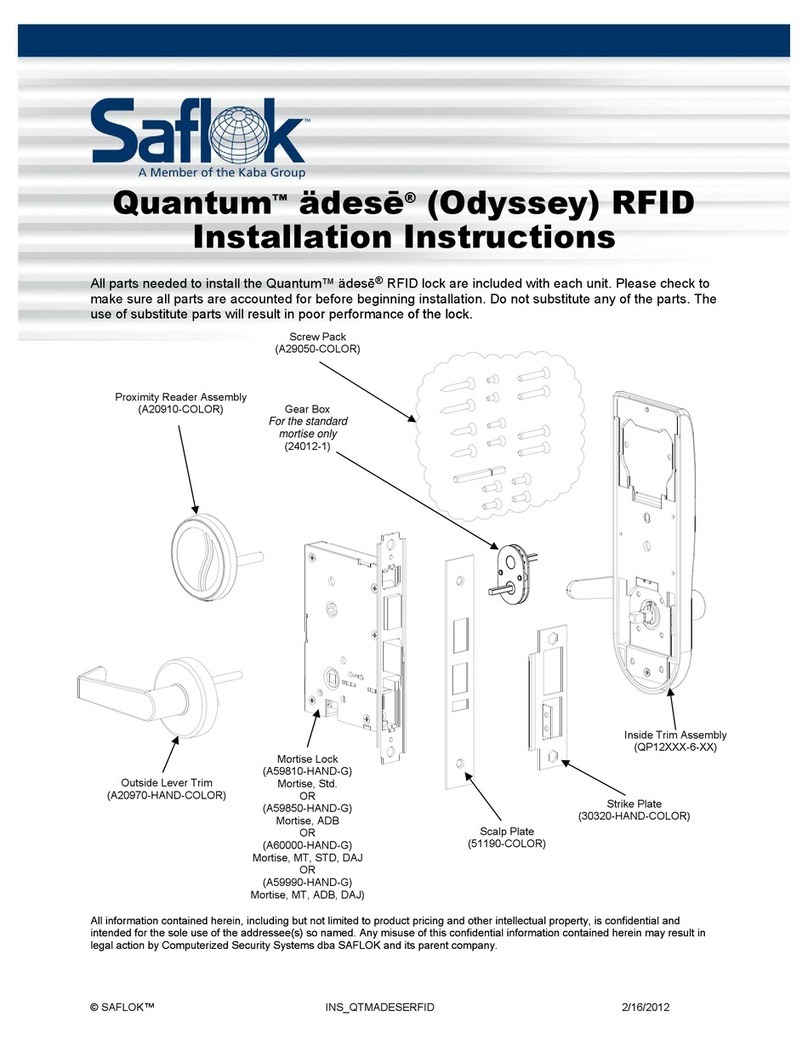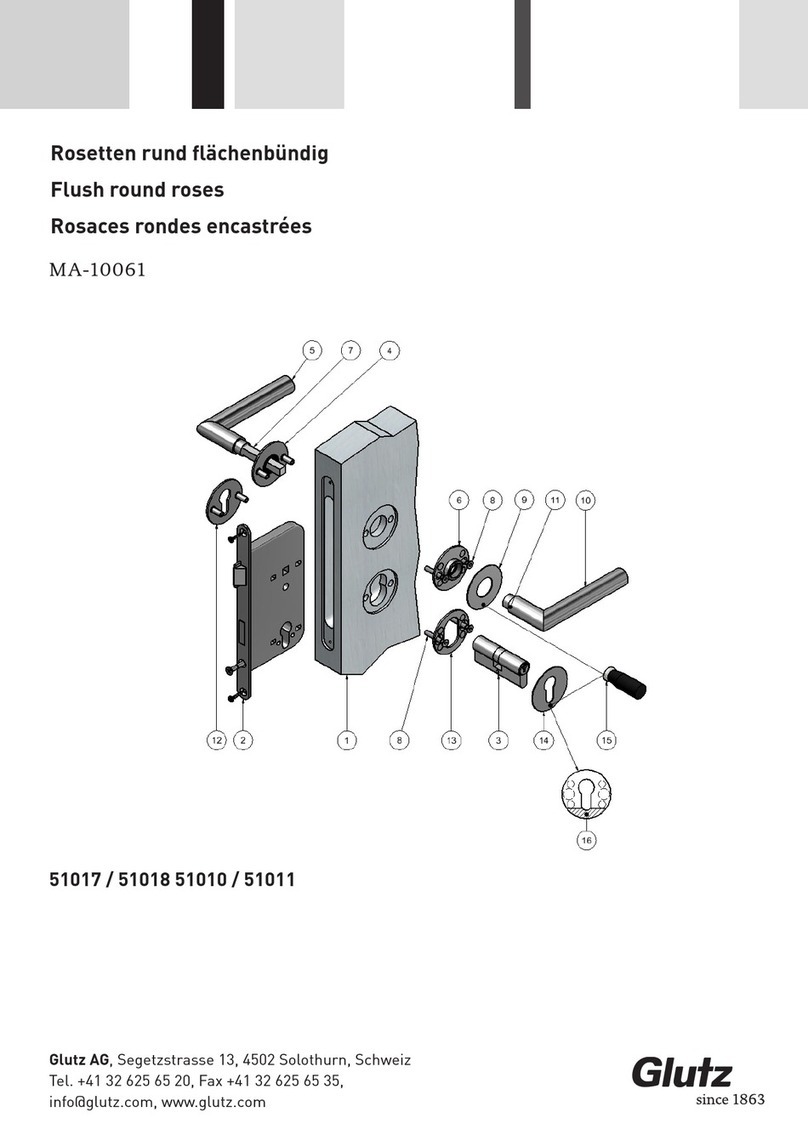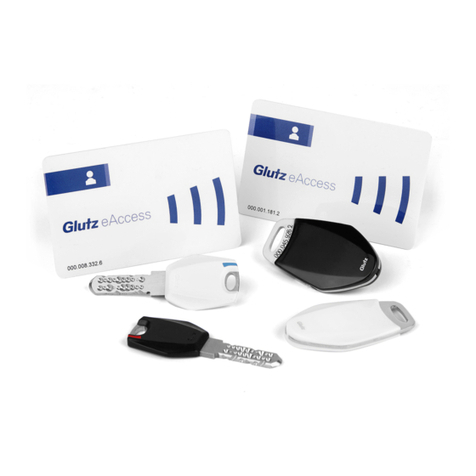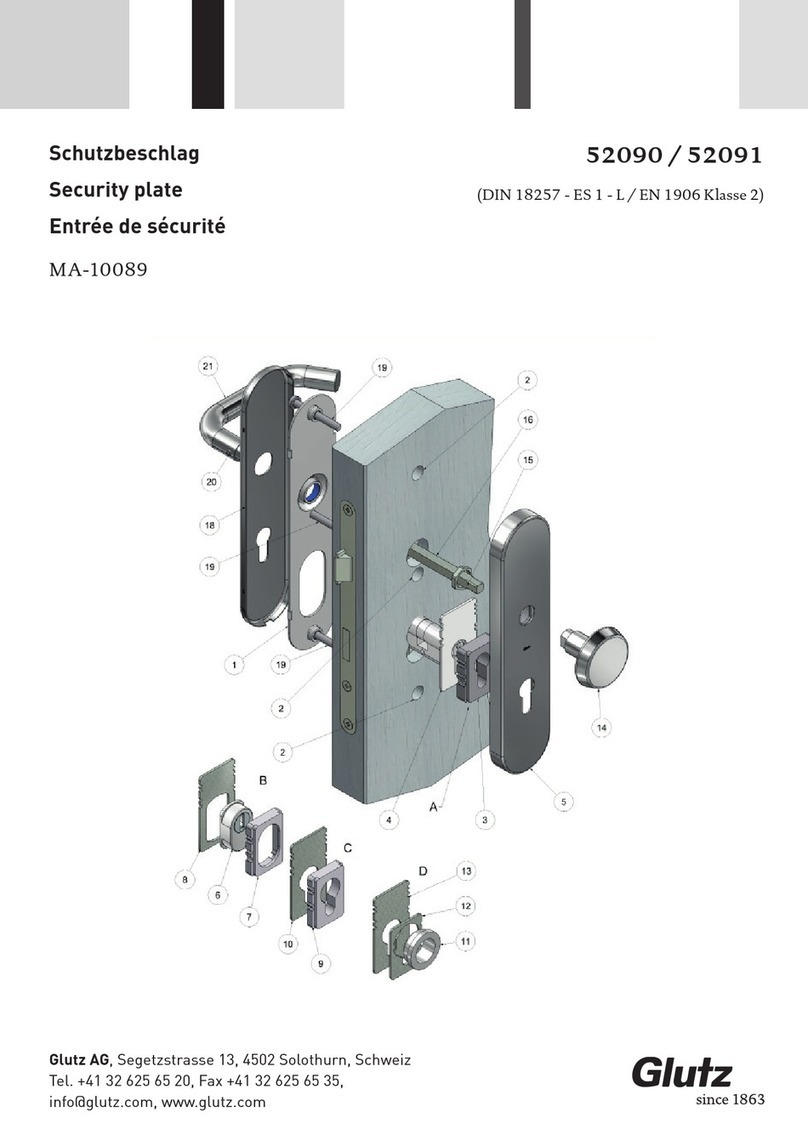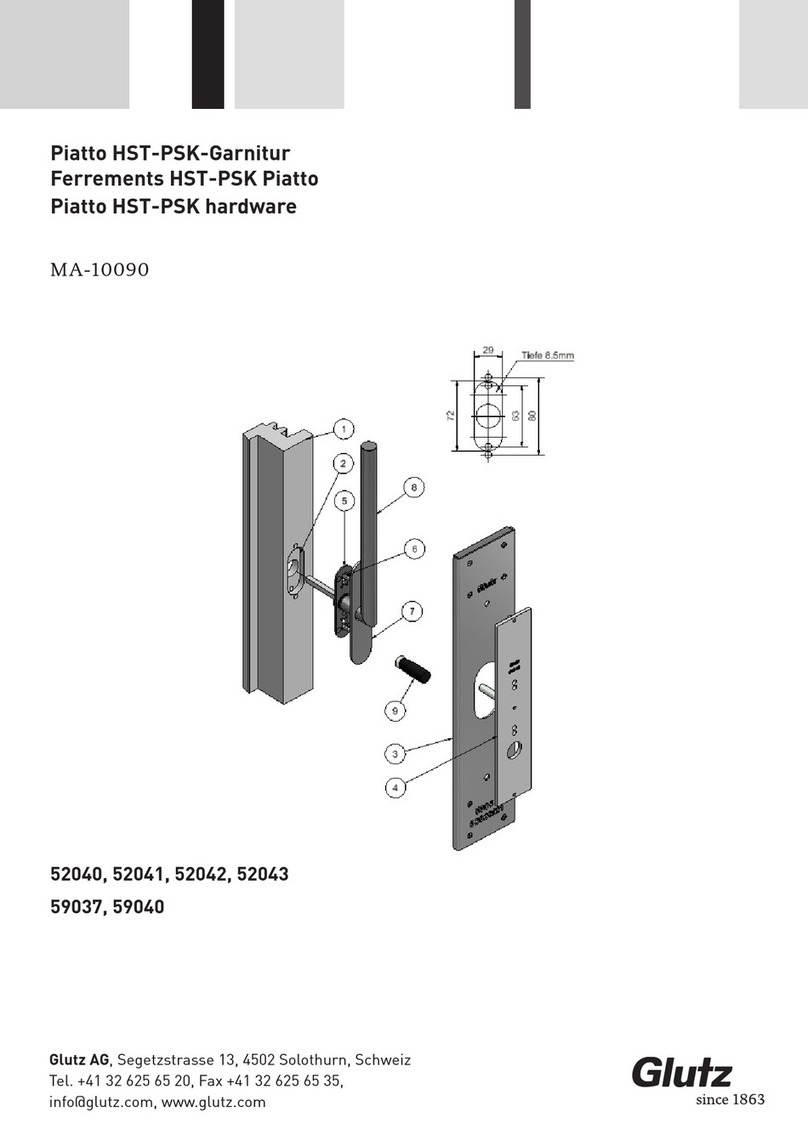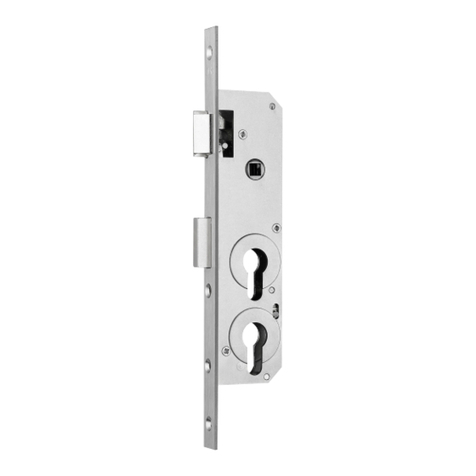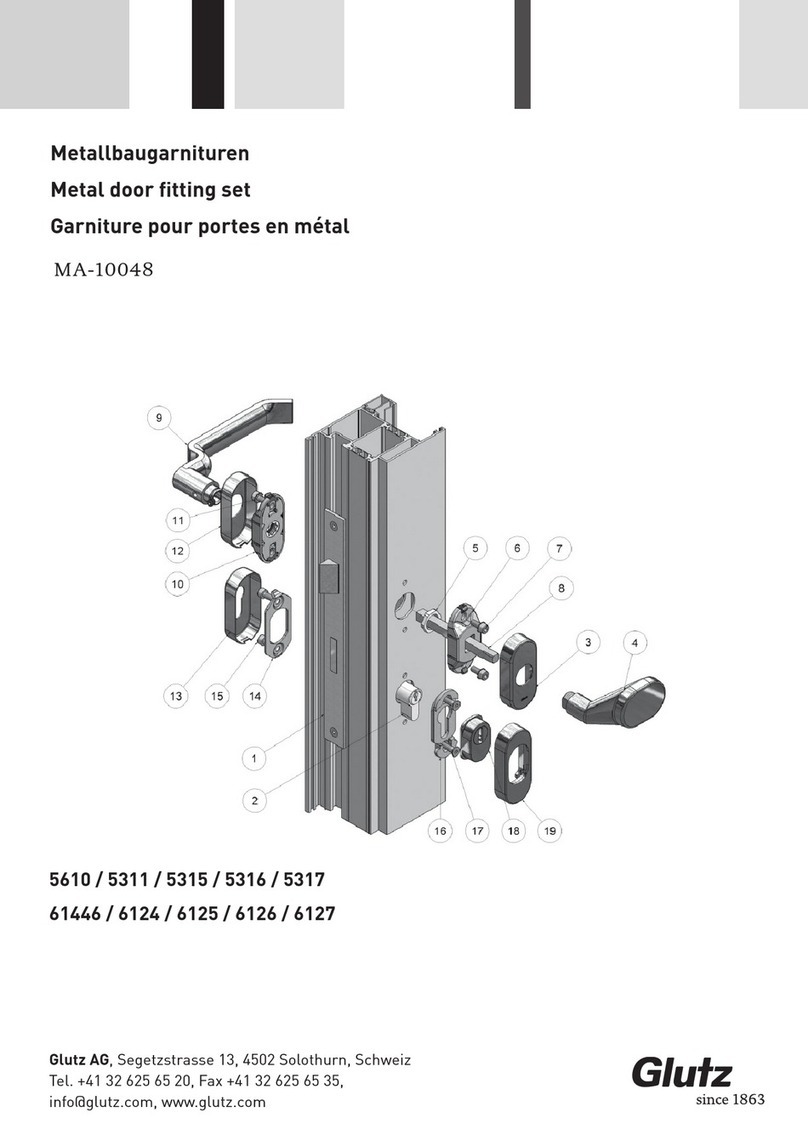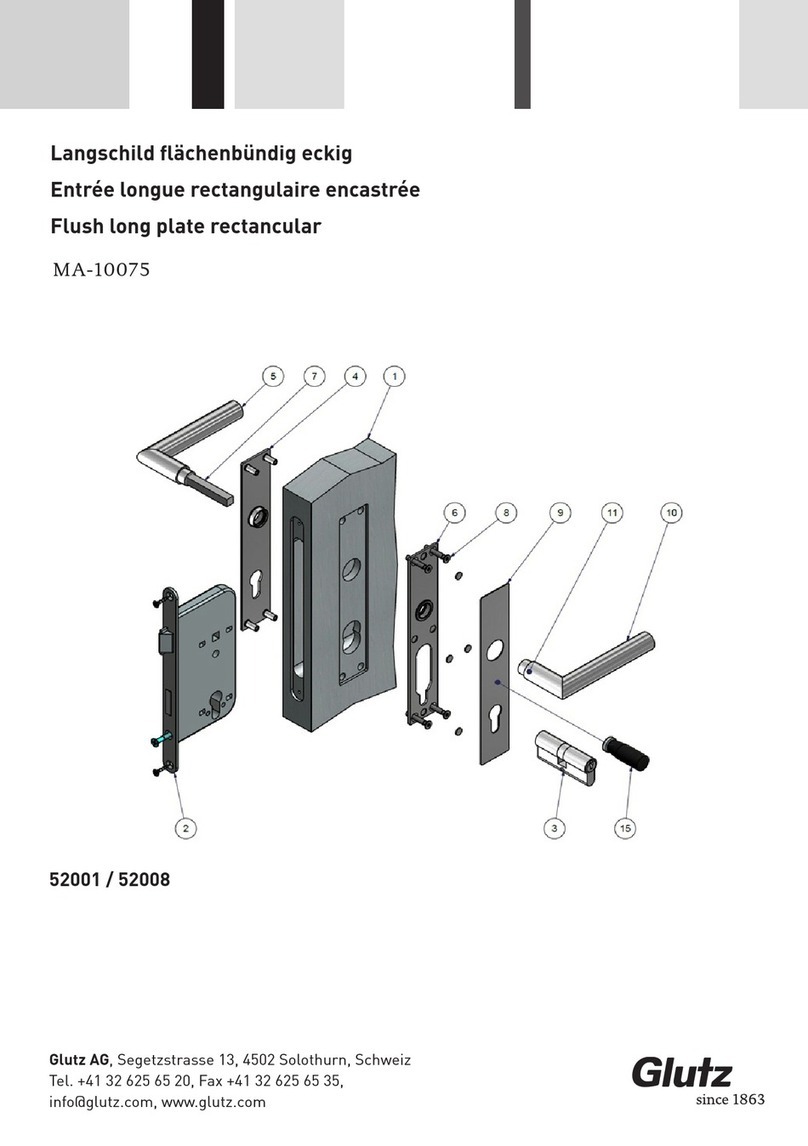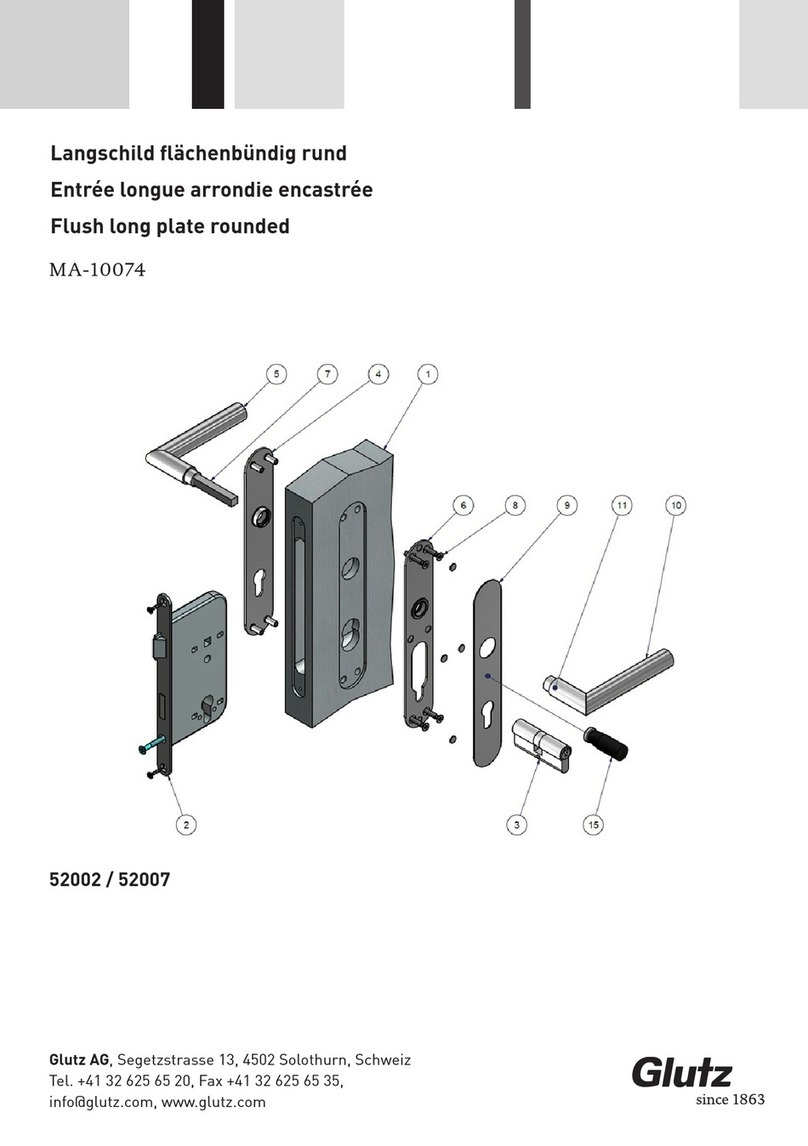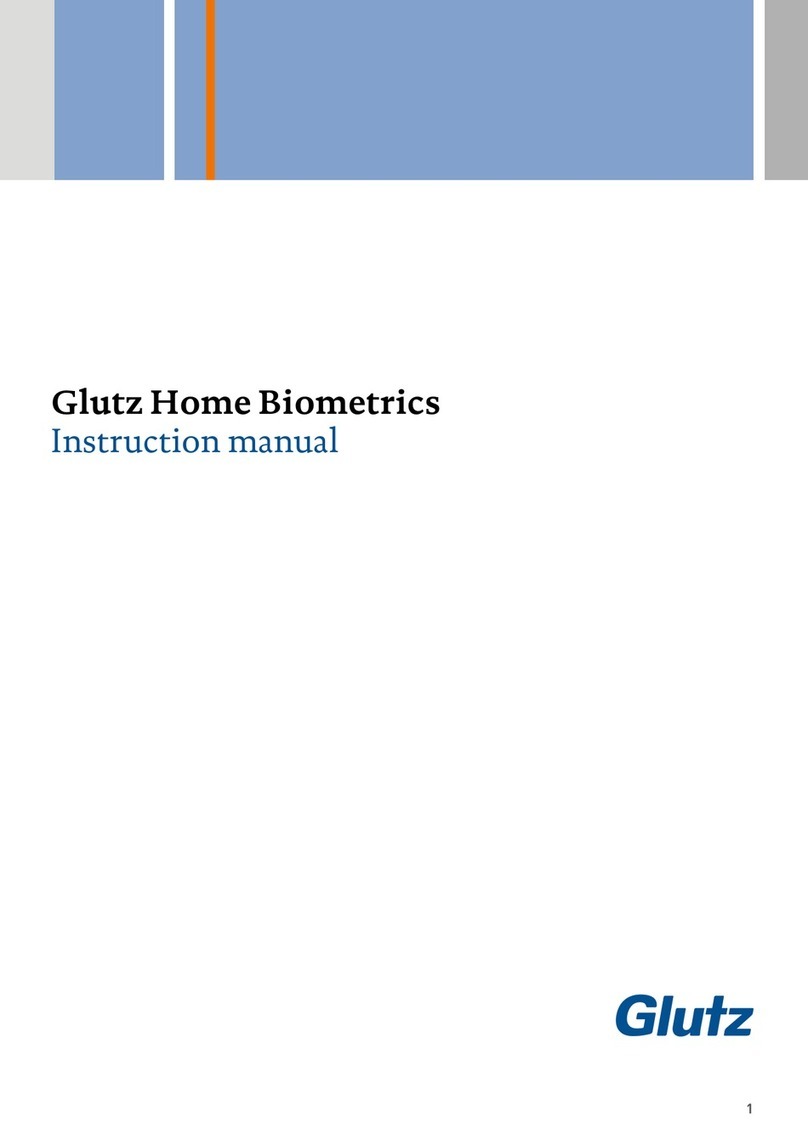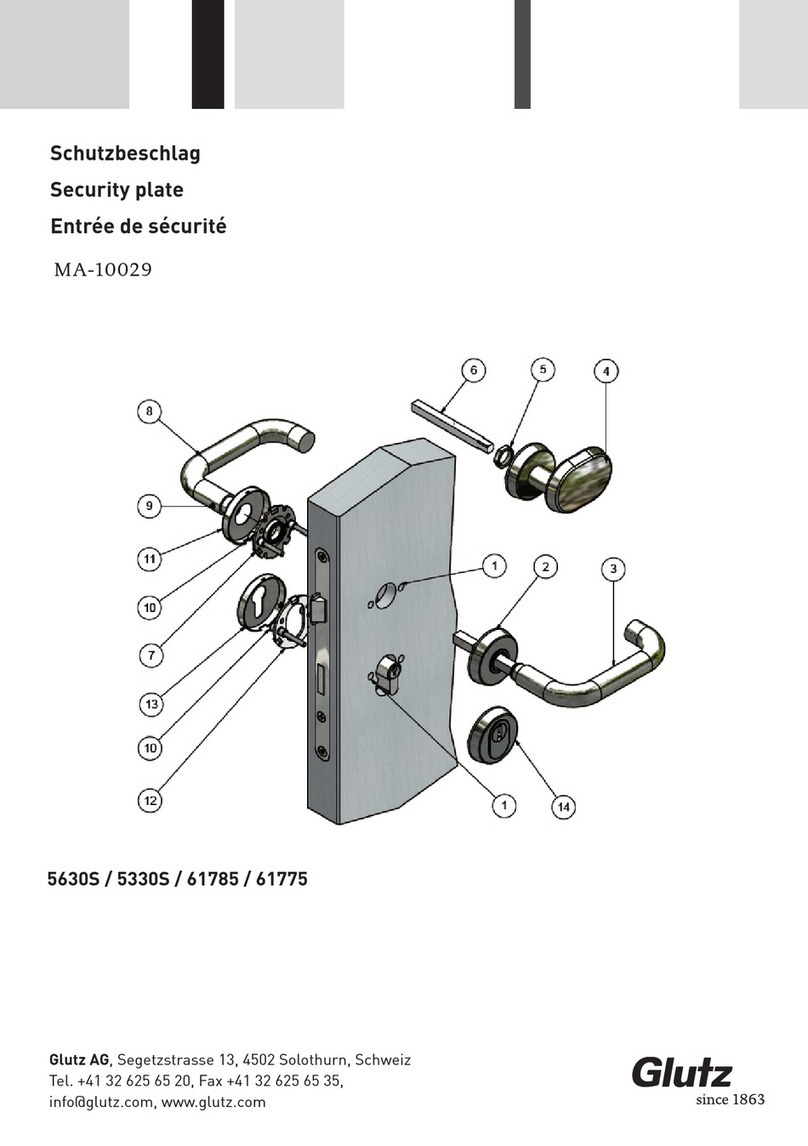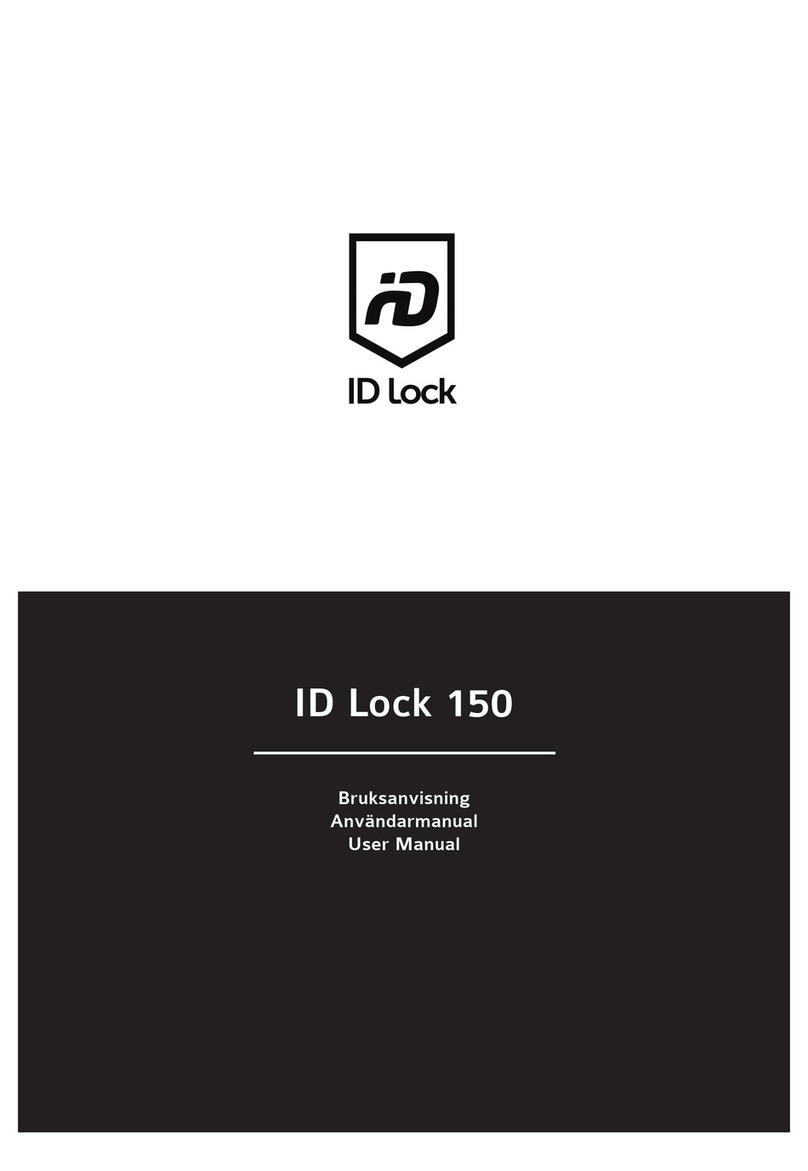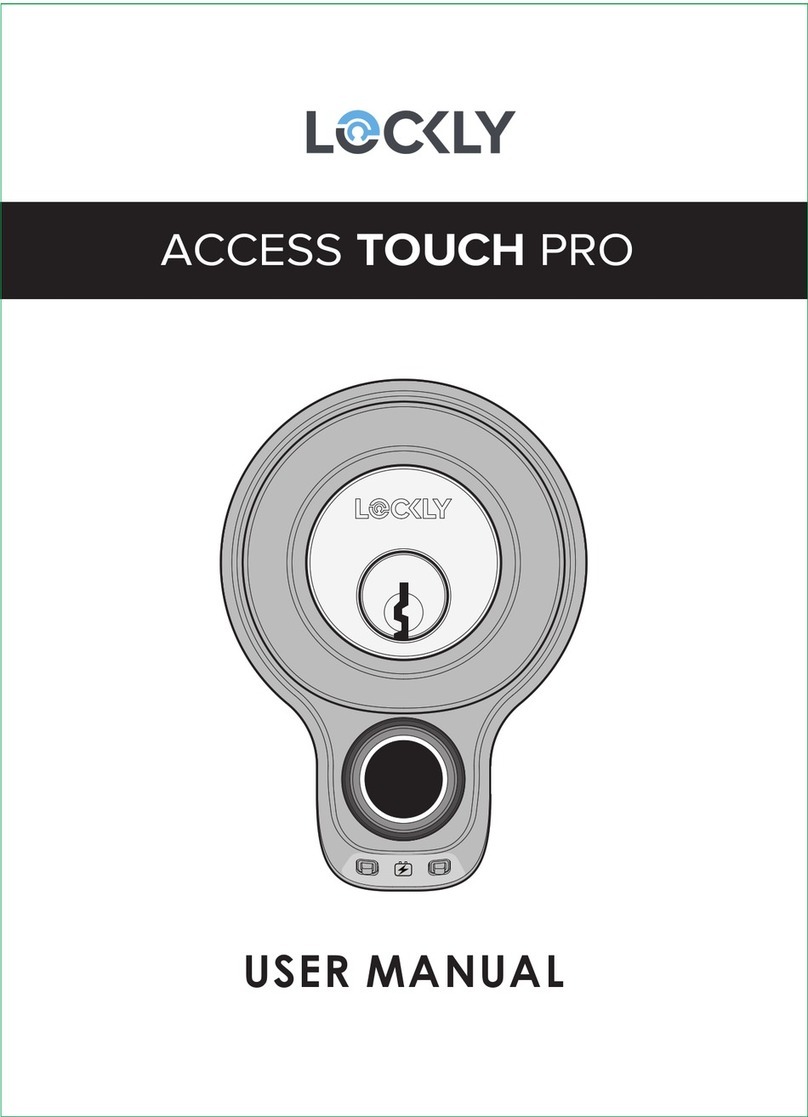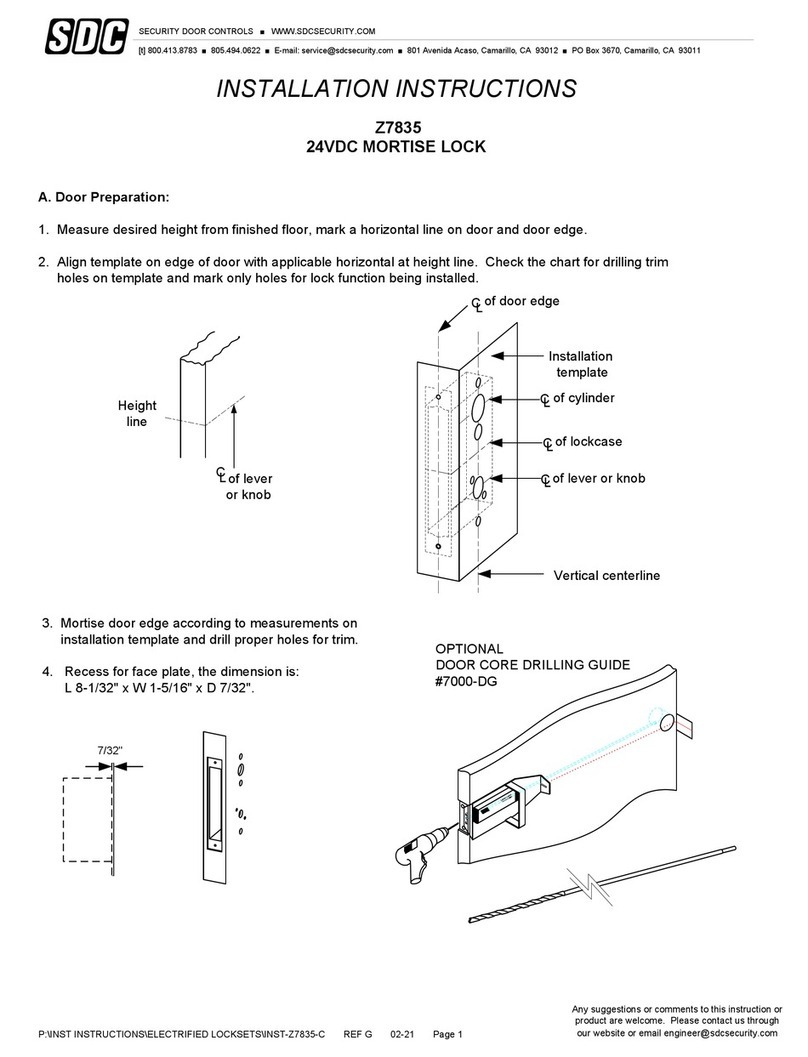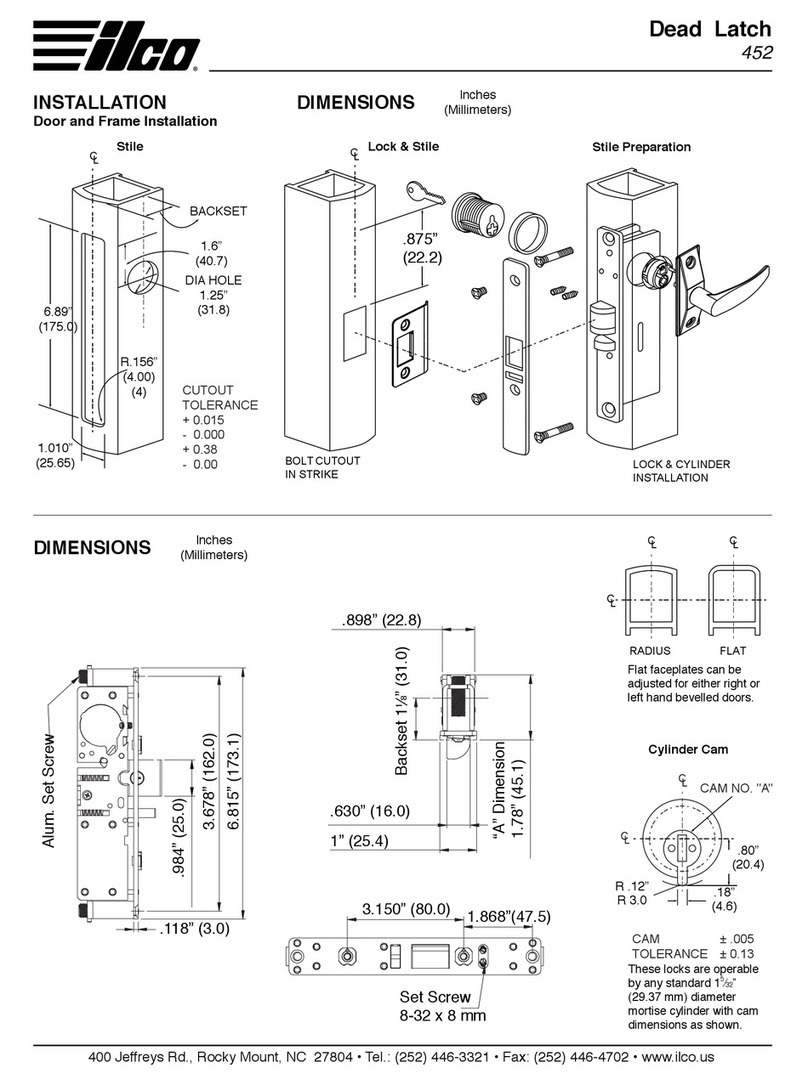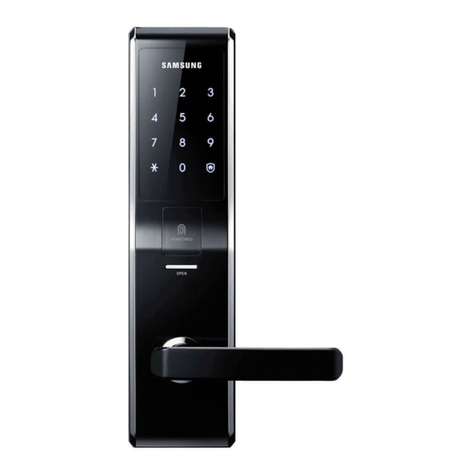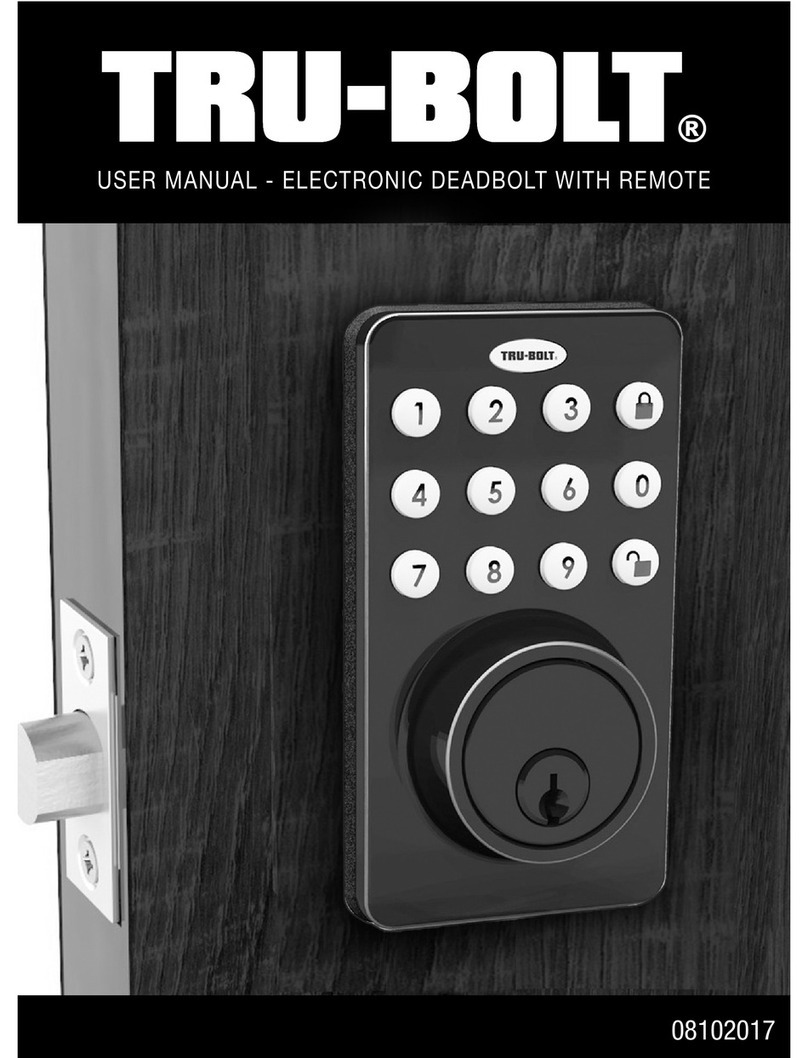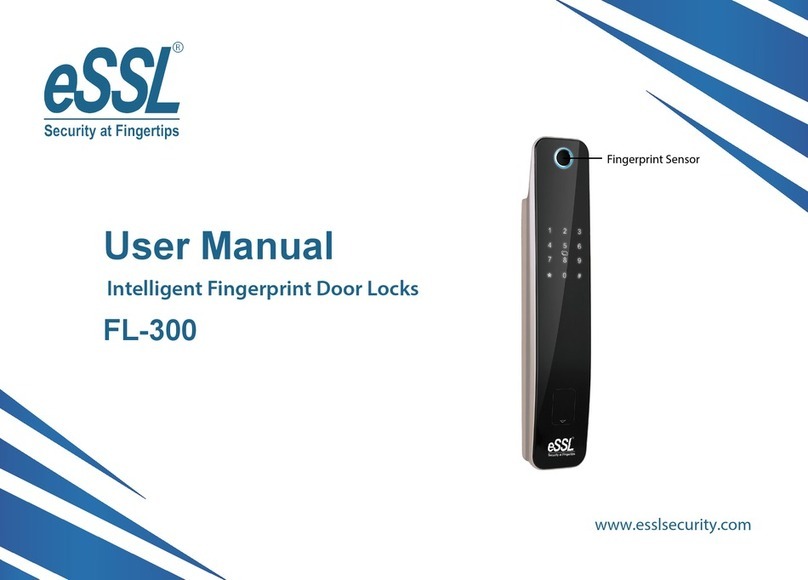
11
Information about the HZ-lock VB 19000 and the fittings
The following information about locks and fittings must be observed. Non-observance releases us from any
liability obligation.
1. Product information and intended use
A mortice lock is a lock which is installed in the door leaf and screwed in place in a system normally based
on swing doors.
A lock usually has the task of locking a door and blocking passage. Locking should be understood as holding
a door locked in a manner such that it cannot be opened by pushing and pulling in a manner other than by
actuation of a lever handle, etc.
Blocking should be understood as the securing of the locked door with one or multiple rigid bolts extended
from the door lock which engage in the appropriate recesses of the frame and/or the striking plate openings.
The bolt or bolts must be fixable in their limit position. The opening of the door without an appropriate key
must also be effectively impeded.
The latch serves as the locking device. The blocking is assumed by the bolt or bolts. With the locking process
of a door with HZ-lock VB 19000 security door lock, the latch first engages in the appropriate recess in the
frame or in the striking plate. The control latch arranged under the latch touches the striking plate. A path
length difference of these two latches triggers the blocking of the bolts and they are automatically advanced
and blocked in their limit position by means of pre-tensioned springs. Therefore, the correct locking can
only take place if the bolts can extend unimpeded into the appropriate recesses in the frame or in the striking
plate. Please note that there is more noise with automatic locking than with mechanical locking with the
key. Environmental influences, soiling, tampering, etc. can impair the automatic locking. Therefore, moni-
toring the correct locking is recommended for automatically locking locks.
HZ-lock VB 19000 locks are normally equipped with panic function. In this process, the latch can be re-
tracted with the pre-locked bolts while the key is key removed by means of the inside lever handle and the
split lock follower with a suitable (tested) fixing system. The identification is supplemented with the word
‚panic‘.
In order to ensure use as intended, the correct combination with permissible fittings and locking mechanis-
ms (e.g. square spindle, security plates, cylinders), and accessories (e.g. striking plate, permanent magnet,
cable transition, hinge protection) with assembly according to the installation instructions and provision of
maintenance also applies.
Then, locking cylinder can only be installed in the locks and fittings if they are expressly prepared for the
corresponding locking cylinder. In all other cases the manufacturer, dealer, installer, or user must ensure
that the locking cylinder they have chosen is suitable for the installation and intended application. Manda-
tory legal regulations must be observed.
General terminology, insofar as they are not explained in catalogue parts and images, are defined in DIN EN
12209, DIN EN 1627 ff. and the fittings standards. Deviations from the standard must be specified when
ordering.
2. Misuse
Misuse - i.e. use of the product in a manner other than as intended - of locks occurs, for instance:
•when foreign objects and/or objects not intended by the manufacturer are inserted into the lock or into
the striking plate, fault-free use is impaired,
• tampering or an attack on the lock or striking plate occurs, causing a change
• in the layout, operating method, or function,
•the extended lock bolts are used in a manner not intended by the manufacturer for the purpose of hol-
ding the door open,
•the locking elements are installed or treated after installation in a manner which impairs their function,
e.g. painted,

